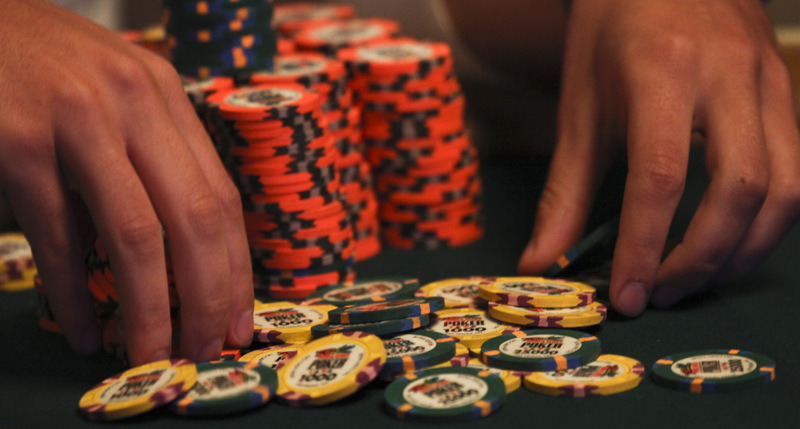






Analyzing Two Mid-Stakes Poker Hands Played By Doug Polk |
|
|

By Ernie Gorham
One of the best ways to get better at poker and win more money is to watch what the best players are doing and try to figure out why.
That is what we will do here today, so keep reading to get a glimpse inside the head of one of the best, Doug Polk.
Hand 1: Giving Up and Winning Anyway
In this session recorded for members of the Upswing Lab training course, Doug plays $3-$6 and explains his thoughts as he plays. The first hand starts with the cutoff open-limping and the button raising to 4.5 big blinds (BBs). Doug is next to act with A 5
5 in the small blind and re-raises to 11 BBs.
in the small blind and re-raises to 11 BBs.
There are a few reasons for this raise:
Note: This is an example of a fairly advanced poker concept called blockers, which is covered in-depth in one of the lessons inside the Upswing Lab training course. Joining gets you access to the blocker lesson along with 245 hours of coaching videos and 259 preflop charts. Click here to learn more!
Both the cutoff and the button call the raise, making the pot 33 BBs. The flop comes K J
J 3
3 and Doug elects to check.
and Doug elects to check.
You could make a case for continuation betting here due to our range advantage (i.e. we can have A-A, A-K, K-K and J-J here while the other players shouldn’t). However, there are other hands in our range that are better candidates to bluff.
When bluffing, you generally want to pick hands that have a chance to improve on later streets. Some better options include:
Additionally, our bluffing frequency is tied to our value bet frequency, and we don’t have that many value bets on this board. This means we don’t need too many bluffs here.
Both players do check behind and the turn is the 10 . Doug decides to bet 11.5 BBs.
. Doug decides to bet 11.5 BBs.
This hand makes a much better bluff candidate on the turn because:
Both players fold and Doug wins a sizable pot with no pair!
Now, on to the second hand.
Hand 2: Flopping the Nut Flush Draw in Position
The hijack opens to three BBs and Doug calls on the button with A 8
8 . Both blinds fold.
. Both blinds fold.
Usually we prefer three-betting over cold-calling because it allows us the opportunity to win the pot preflop. However, cold-calling also has some merit because:
This time both of the blinds fold and Doug sees a flop of 5 4
4 4
4 . The hijack player bets six BBs into a pot of six BBs. Doug elects to call.
. The hijack player bets six BBs into a pot of six BBs. Doug elects to call.
While it may be tempting to raise with the nut flush draw here you need to remember a couple of things:
The turn is the Q and villain bets 10 BBs into a pot of 19 BBs. Again Doug chooses to call because:
and villain bets 10 BBs into a pot of 19 BBs. Again Doug chooses to call because:
The river is the 4 and villain checks. Again Doug checks behind, as he really can’t represent too many hands for value and like on the turn still has some showdown value.
and villain checks. Again Doug checks behind, as he really can’t represent too many hands for value and like on the turn still has some showdown value.
Unfortunately this time Villain had pocket queens, but you can see that Doug lost the minimum with the line he took.
Sign up for the Upswing Poker Lab today for step-by-step instructions and examples to master both the fundamental theories and situational exploits to greatly increase your skill and earnings.
Features
The Inside Straight
Strategies & Analysis